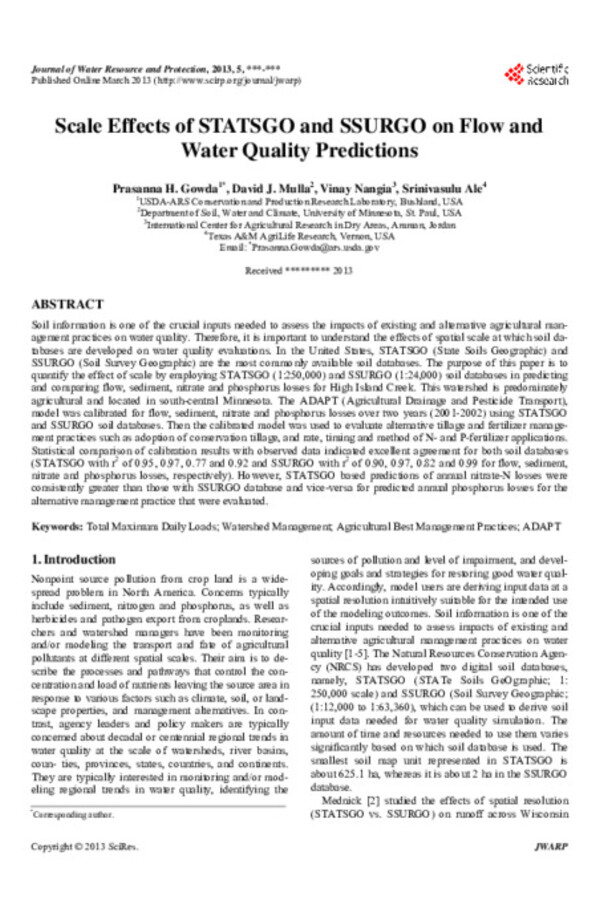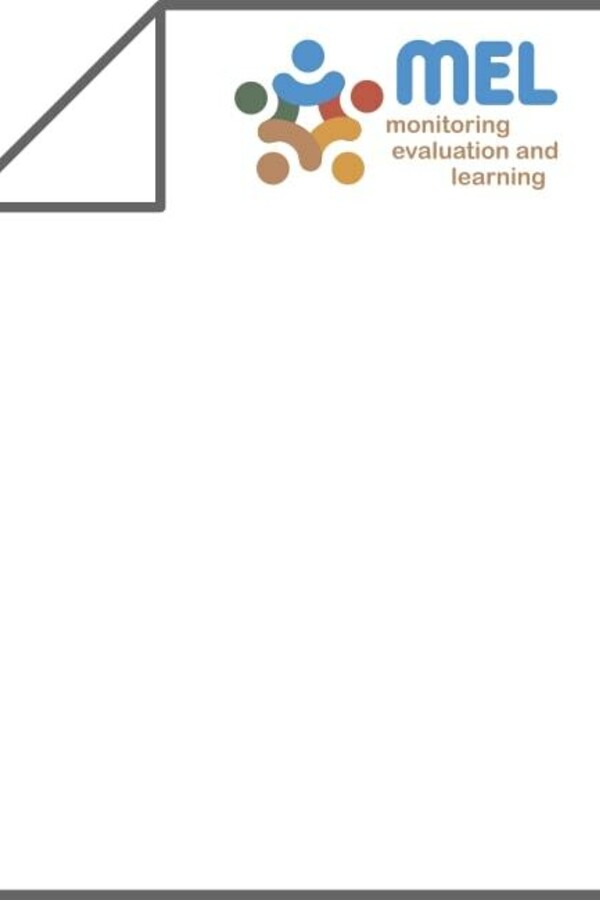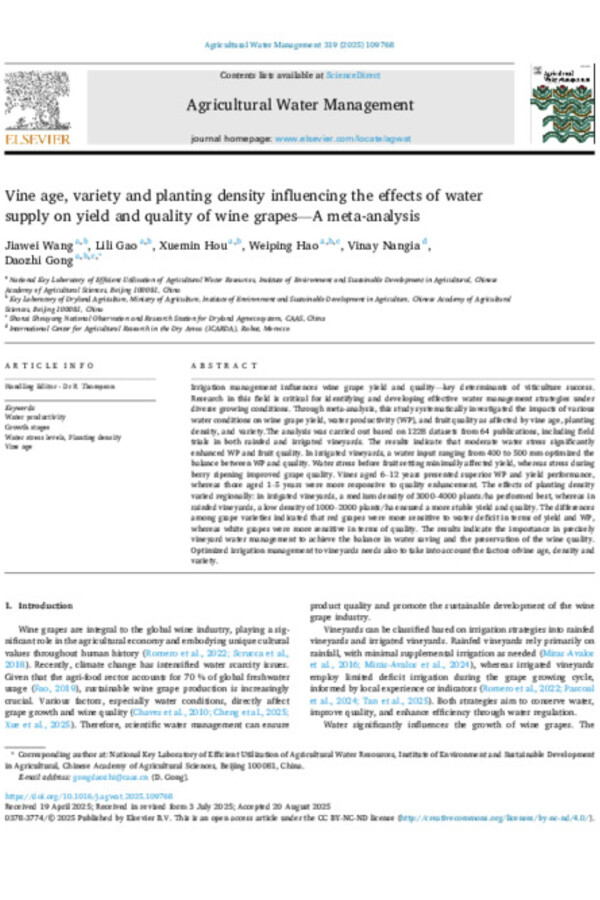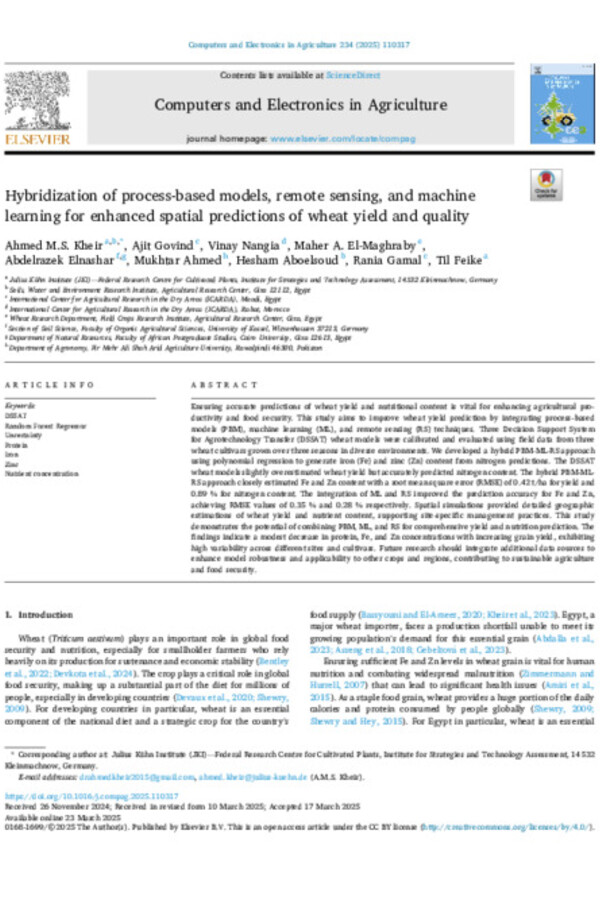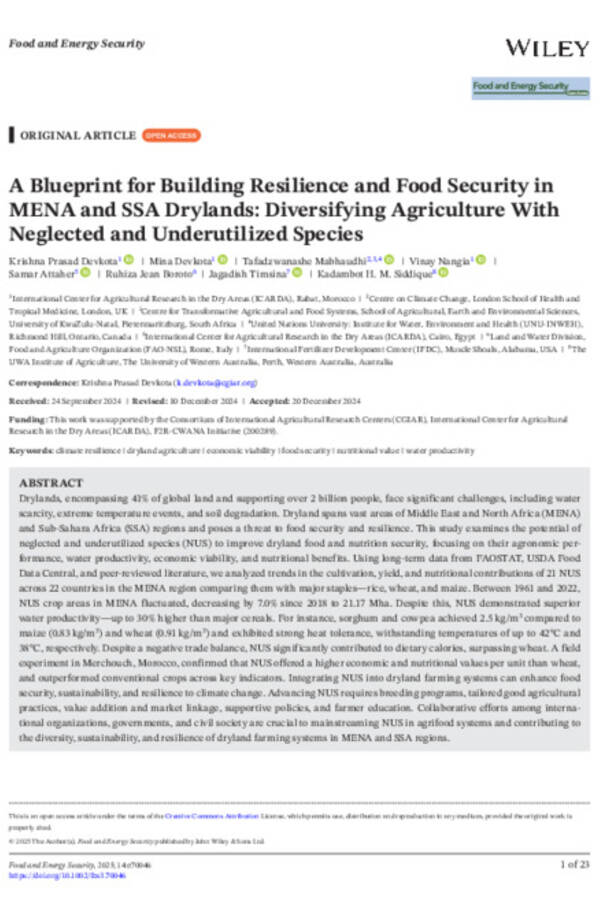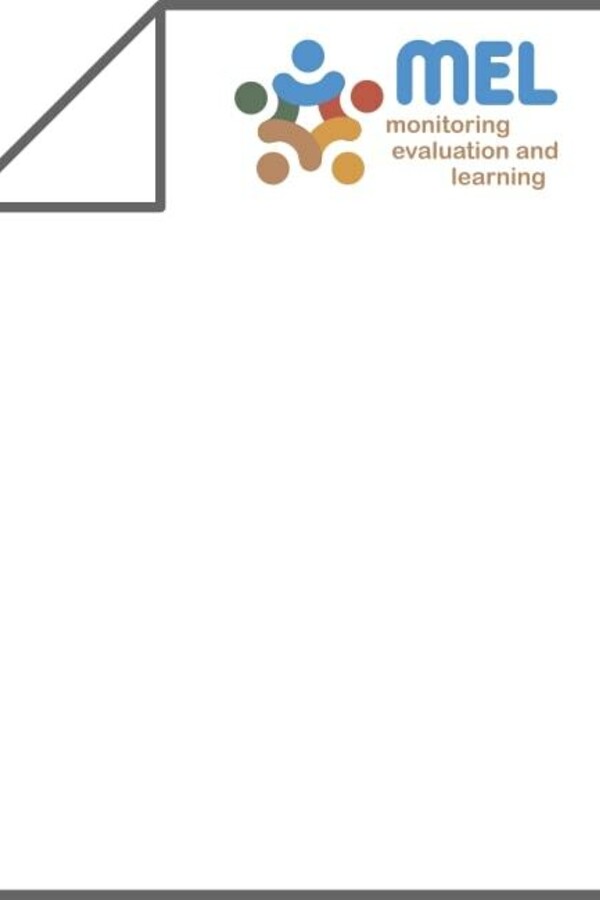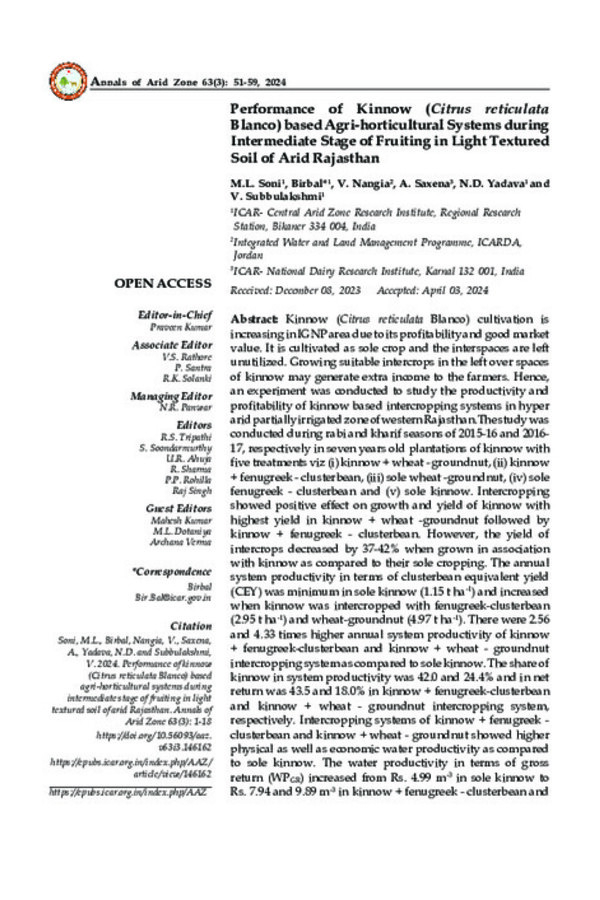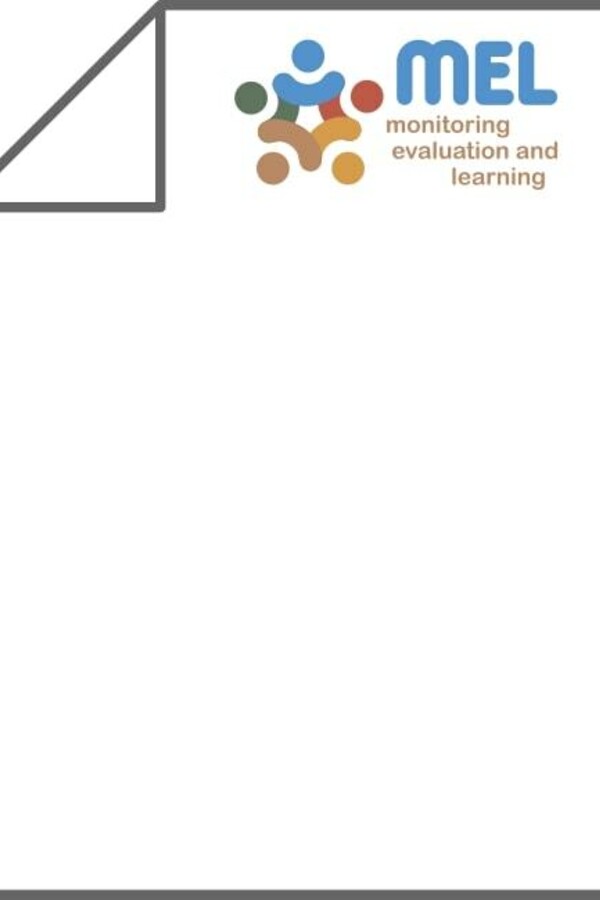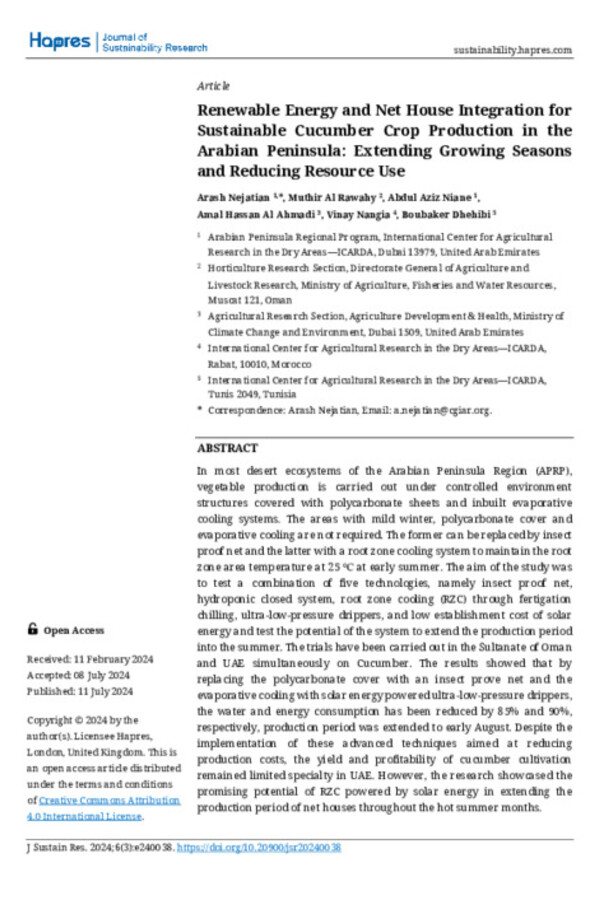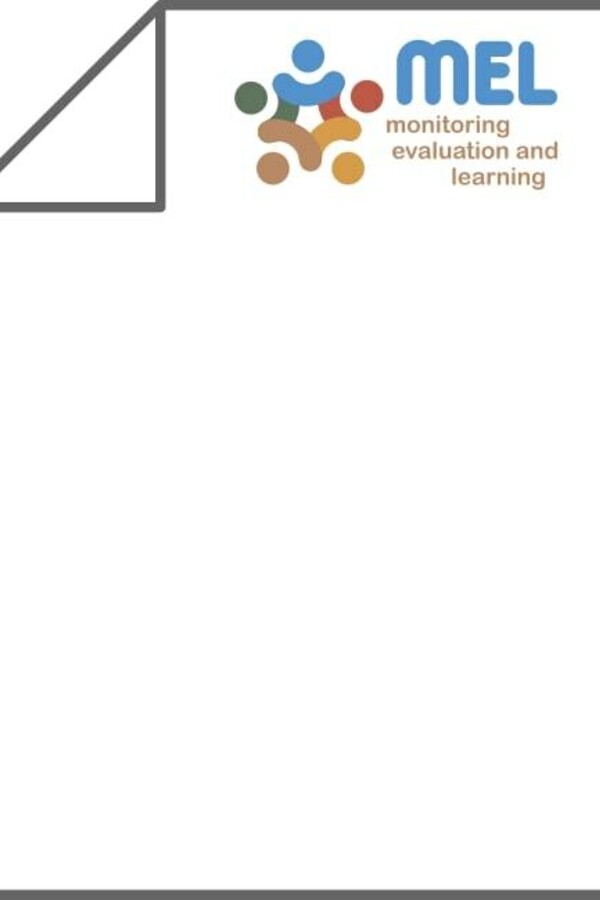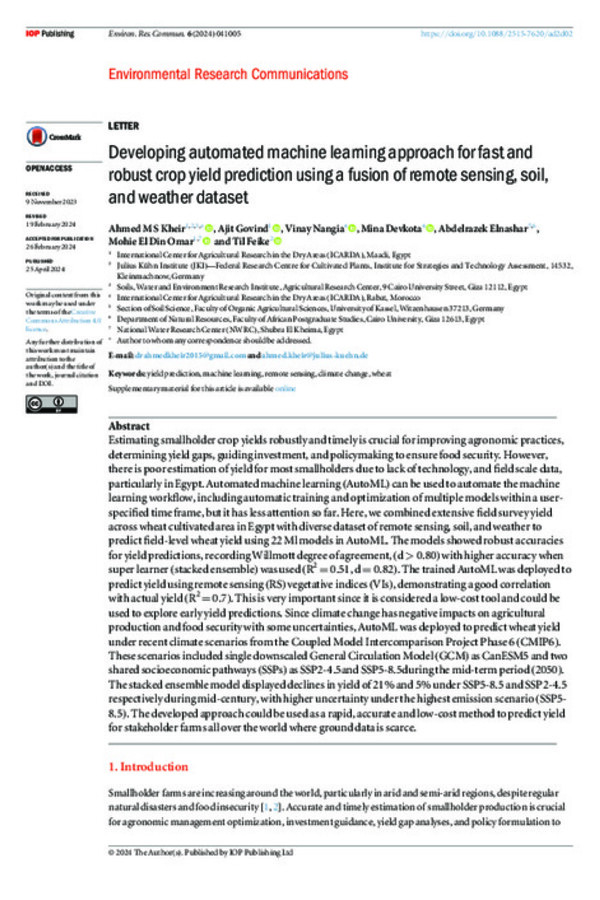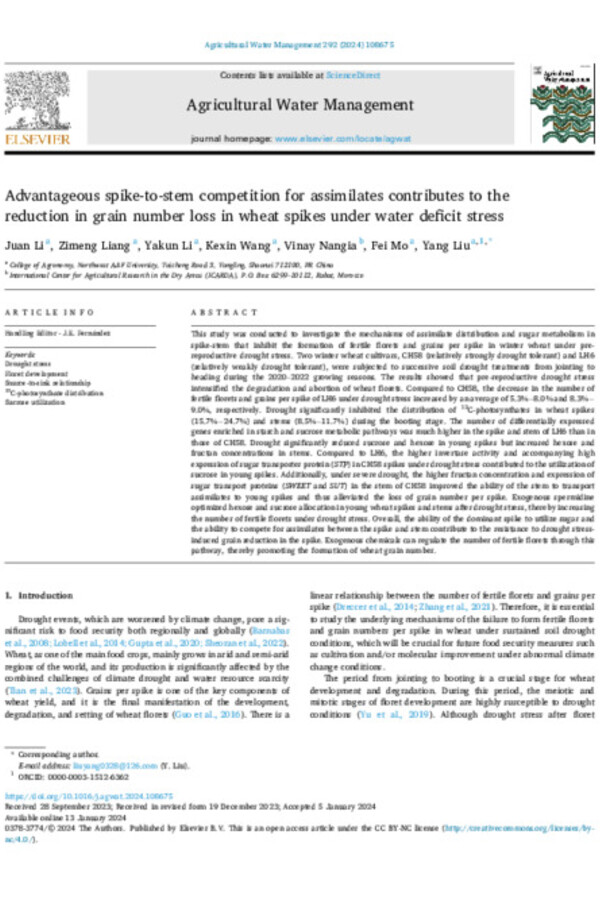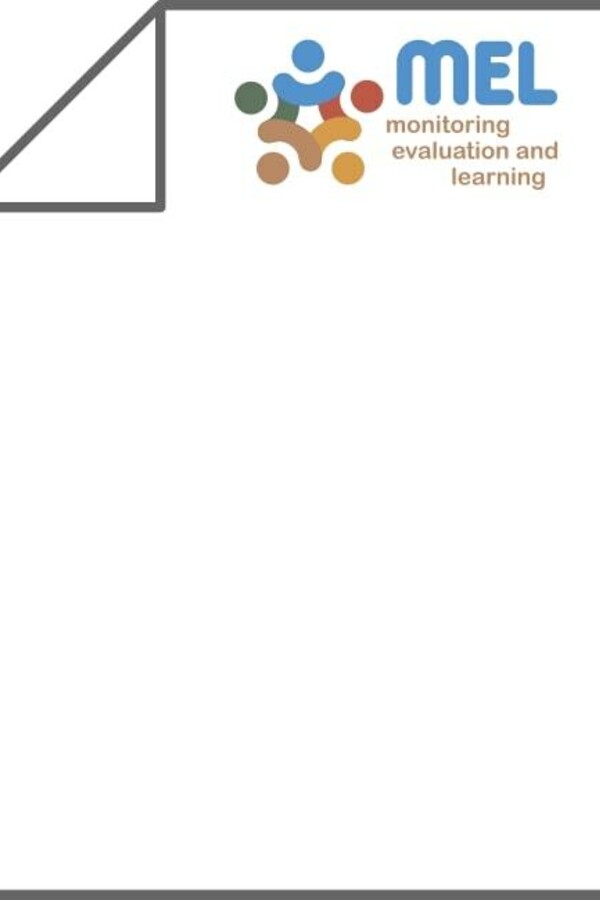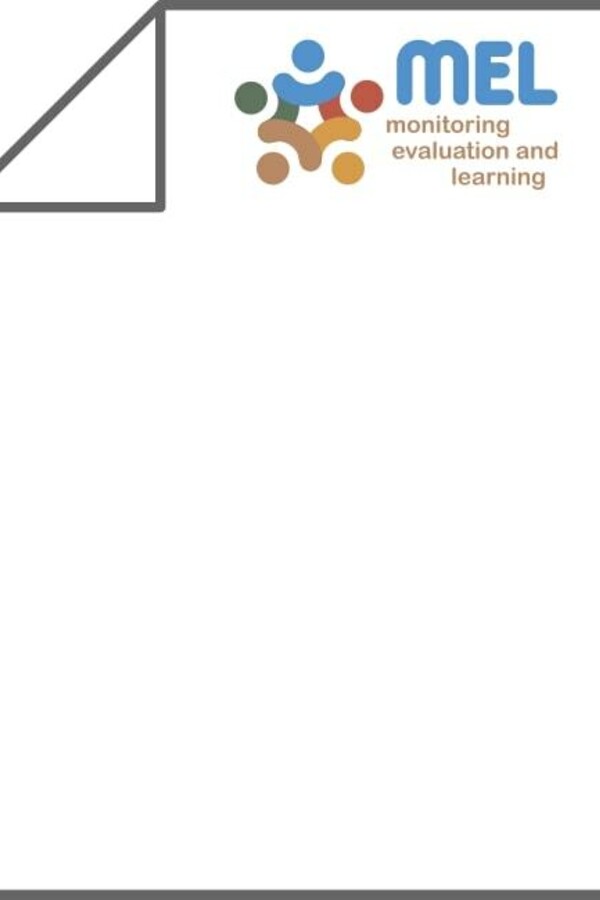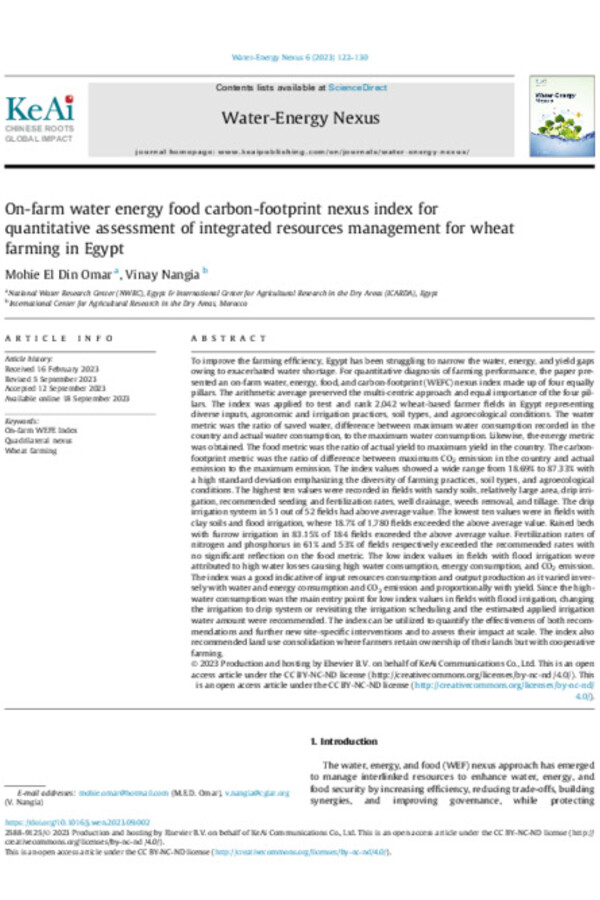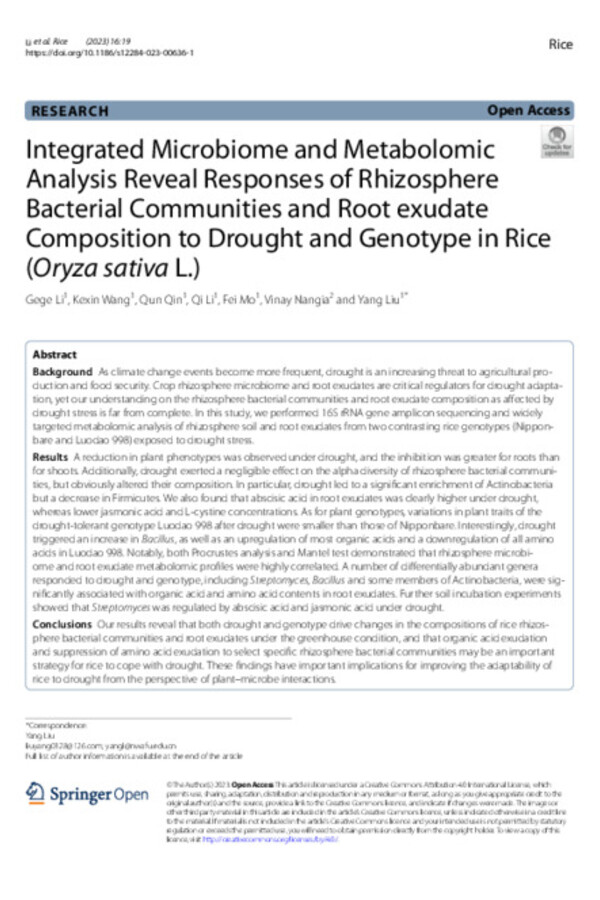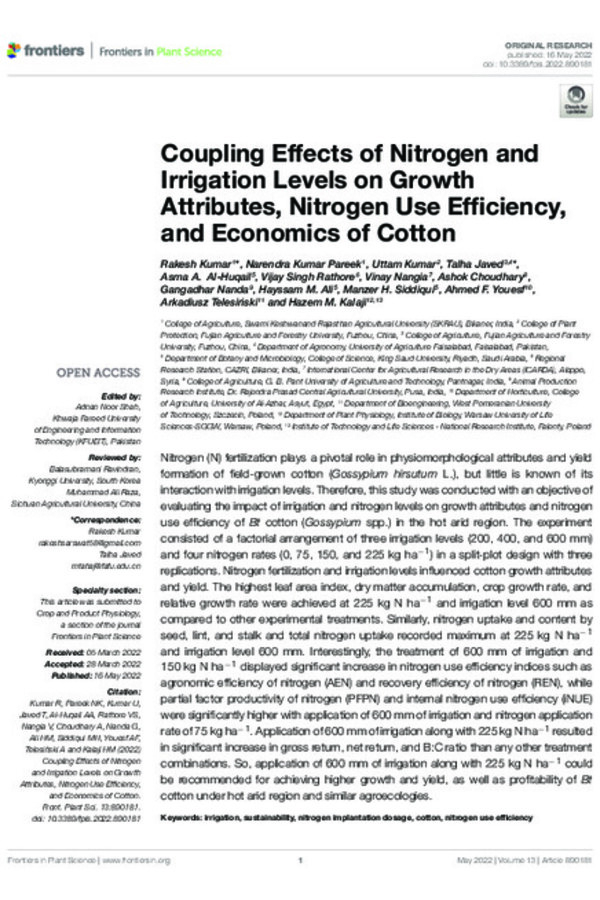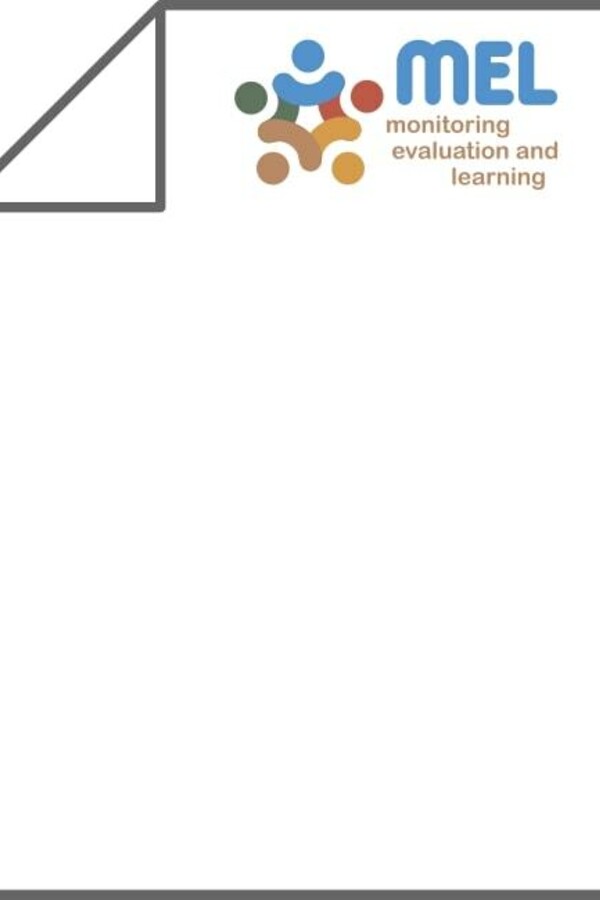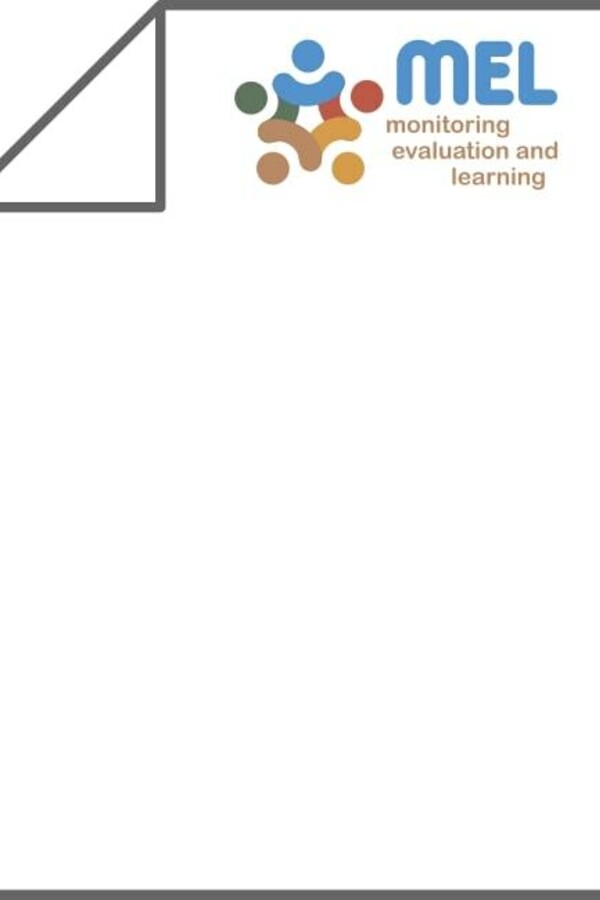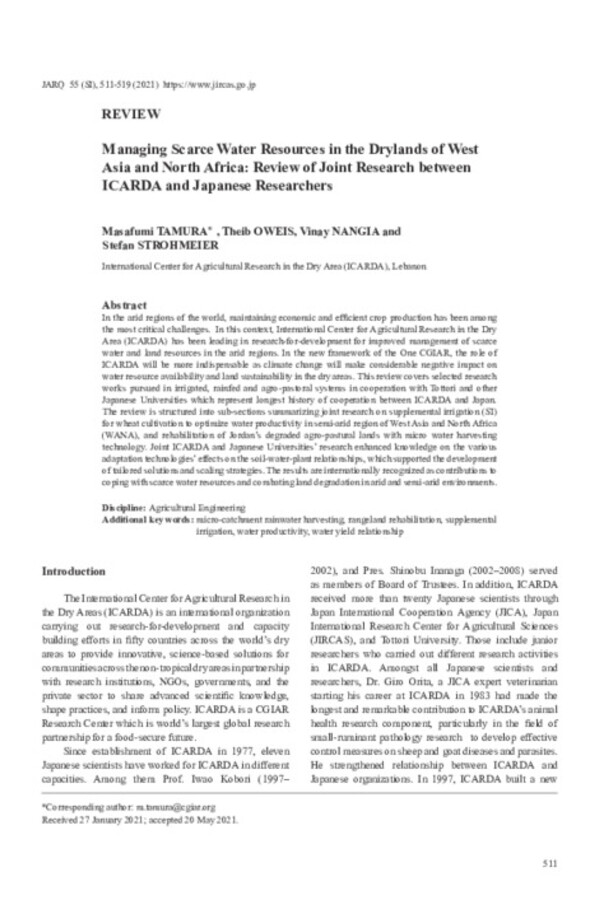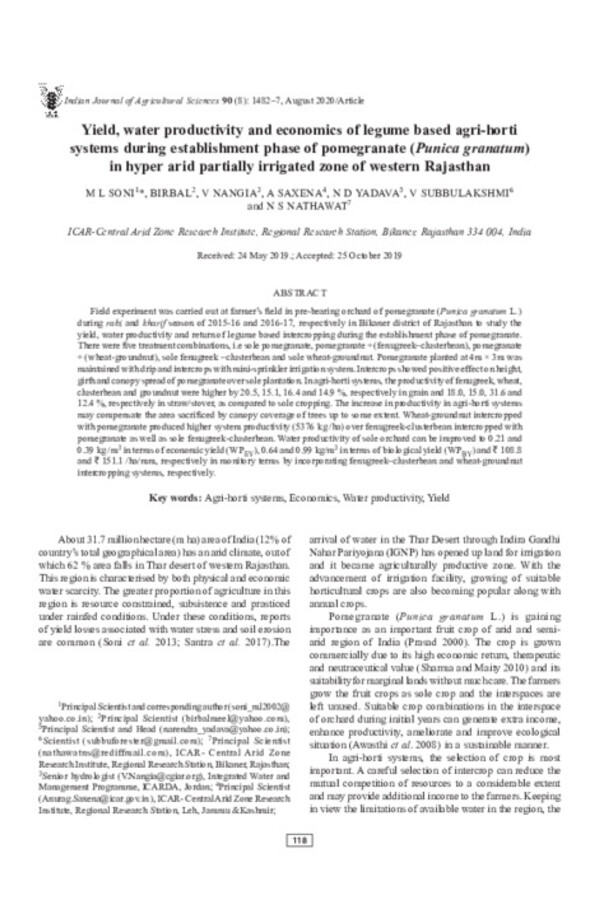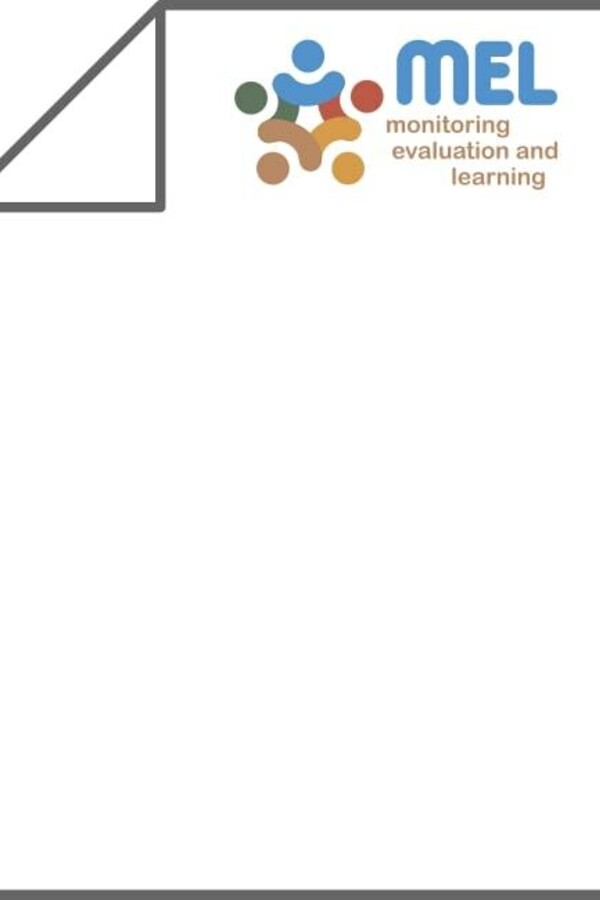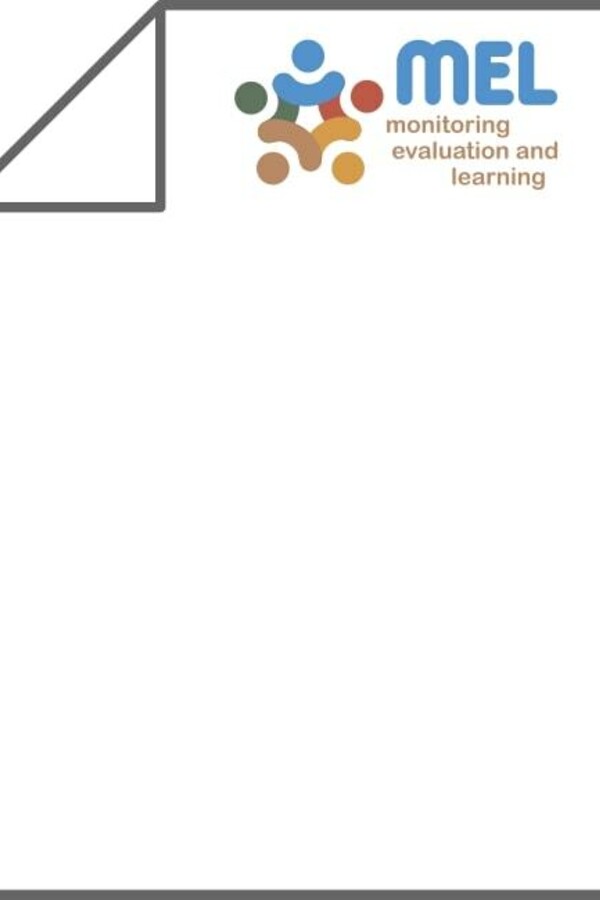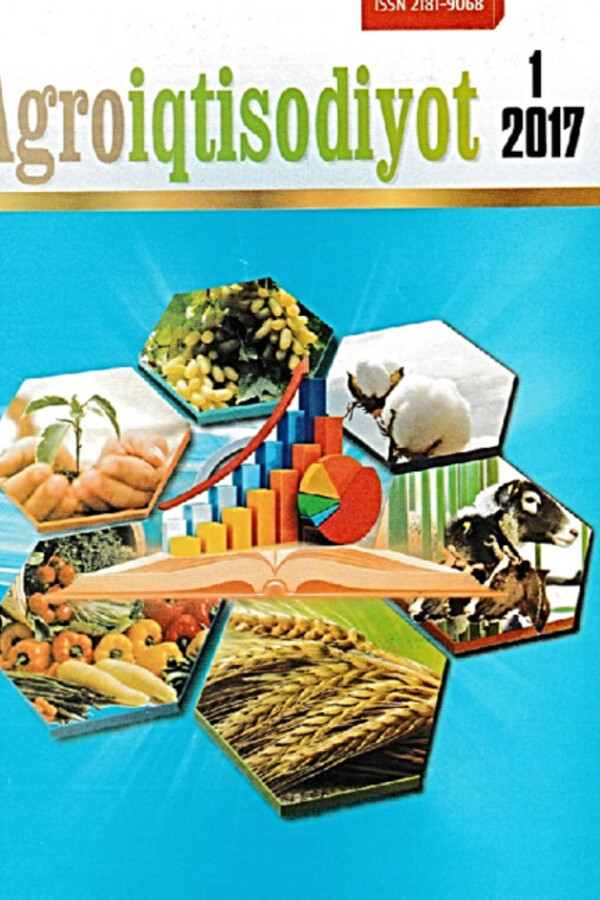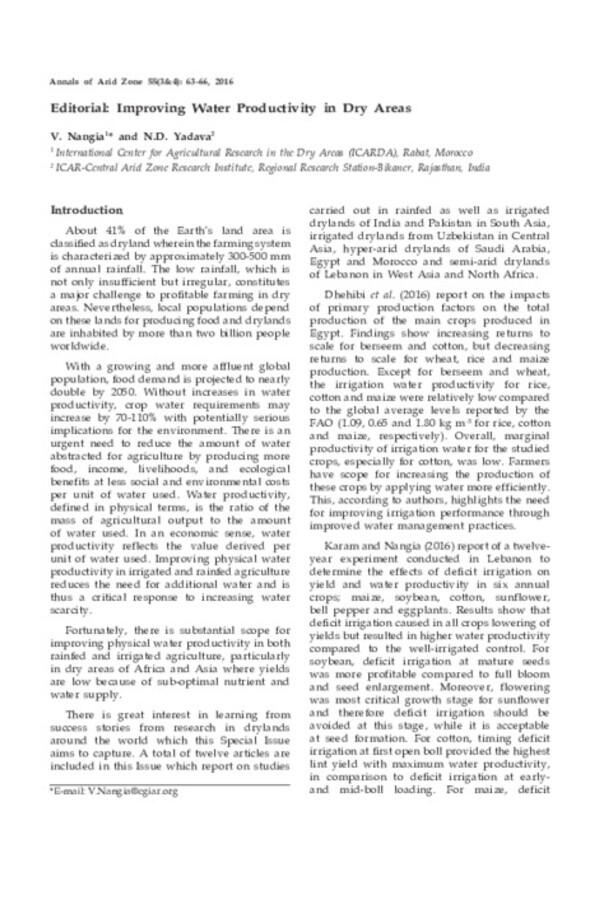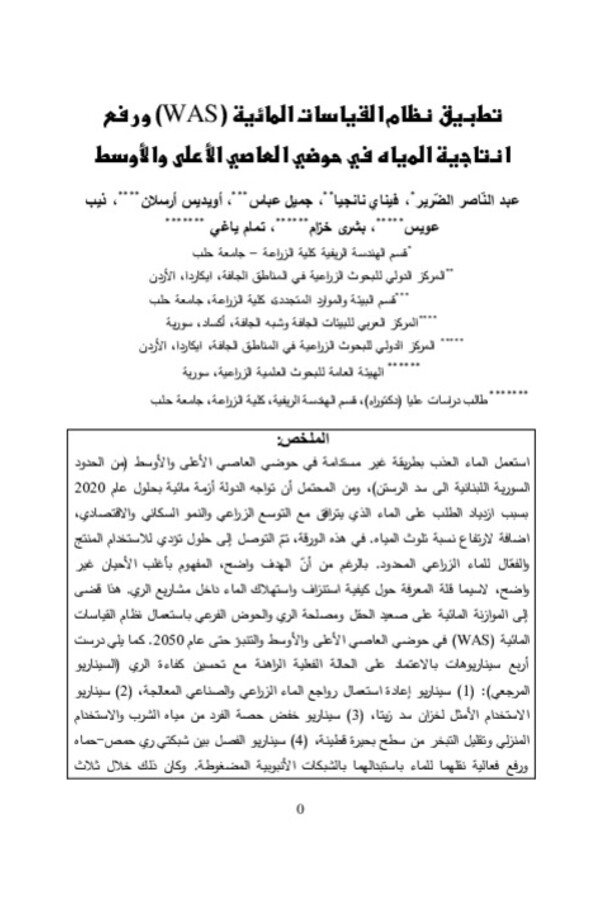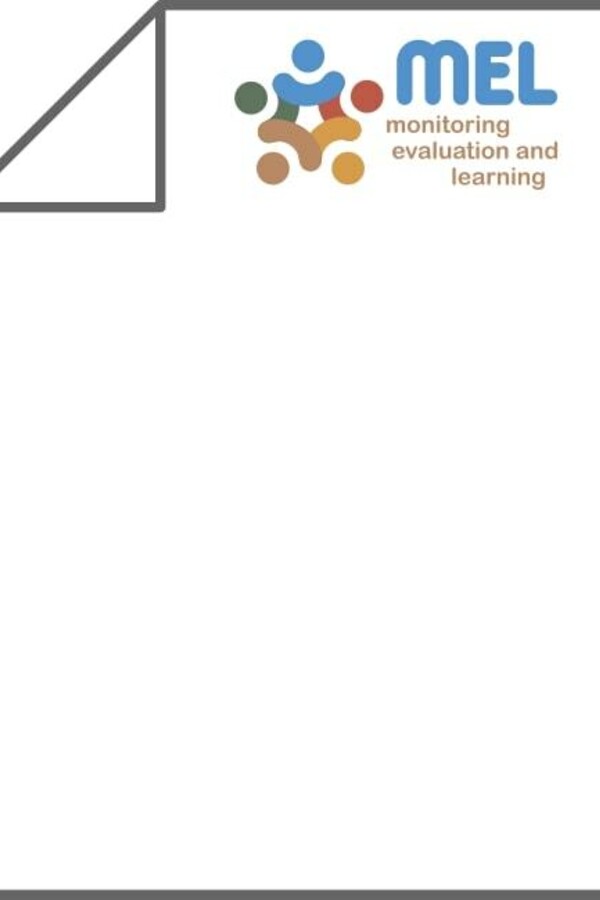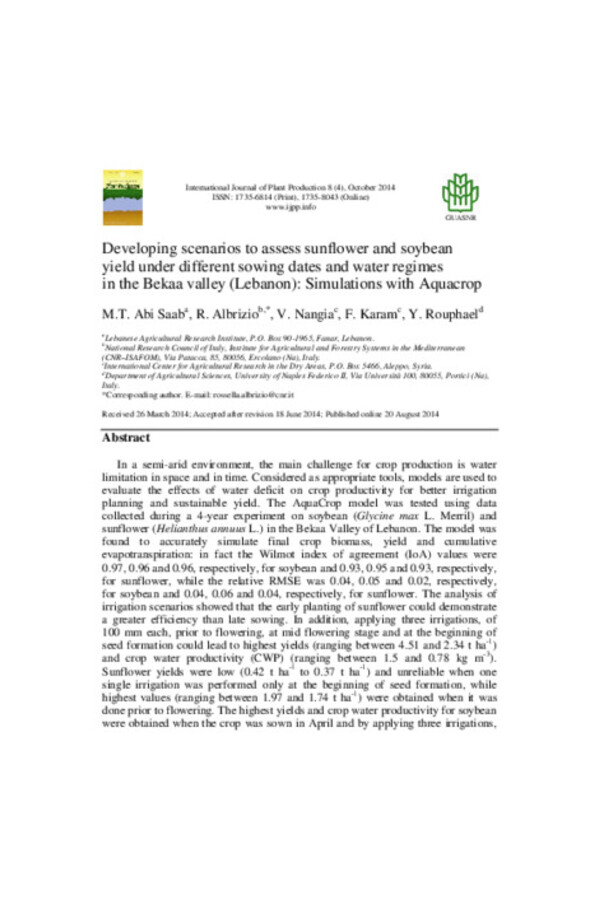
Dr. Vinay Nangia is a Research Team Leader - Soil, Water, and Agronomy at ICARDA, an adjunct faculty at the Texas A&M University (USA), and a visiting professor at Tottori University (Japan). Dr. Nangia is an Advisory Board Member of Global Institute for Water, Environment, and Health (GIWEH - a Geneva-based water think tank), a Steering Committee member of the UN FAO WASAG, Expert Member on UNCCD IWG on Drought, and ICARDA focal point for UNFCCC. He received his Ph.D. in Water Resources Management and two M.S. degrees - first in Biosystems & Agricultural Engineering and second in Geographic Information Science - all from the University of Minnesota, USA. Dr. Nangia is an agricultural hydrologist with extensive experience in agricultural water resource management and environmental impact assessments. At ICARDA, he leads research on water-use efficiency assessments, crop production function analysis, irrigation and drainage performance diagnosis, and the evaluation of water conservation options. Throughout his career, he has applied skills in hydrological and crop modeling, and GIS and remote sensing to research issues relating to climate change, climatic variability, conservation agriculture, water quality, water productivity, land degradation and sustainable crop production. During a 18-year research career, he has served as a PI or co-PI on research projects worth about $30 million, authored or co-authored 200 technical publications that include 90 refereed journal articles in international journals. Dr. Nangia is an internationally recognized expert in hydrological and water quality modeling and GIS applications in water resources management. He has offered more than 20 trainings (covering a total of 400 participants) on hydrologic modeling in 10 countries. Dr. Nangia serves on the editorial board of professional society journals. He has served as research advisor/committee member to M.S. and Ph.D. students and was a visiting professor (2007-2011) at the Institute of Soil and Water Conservation of the Chinese Academy of Science where he co-advised graduate students. Previously, Dr Nangia was a NSERC Visiting Fellow at Agriculture and Agri-Food Canada conducting research on GHG emissions from sub-surface tile-drained croplands of Eastern Ontario prior to which he was a post-doctoral fellow at the International Water Management Institute (IWMI), where he started his career in 2005.
Vinay Nangia's Publications
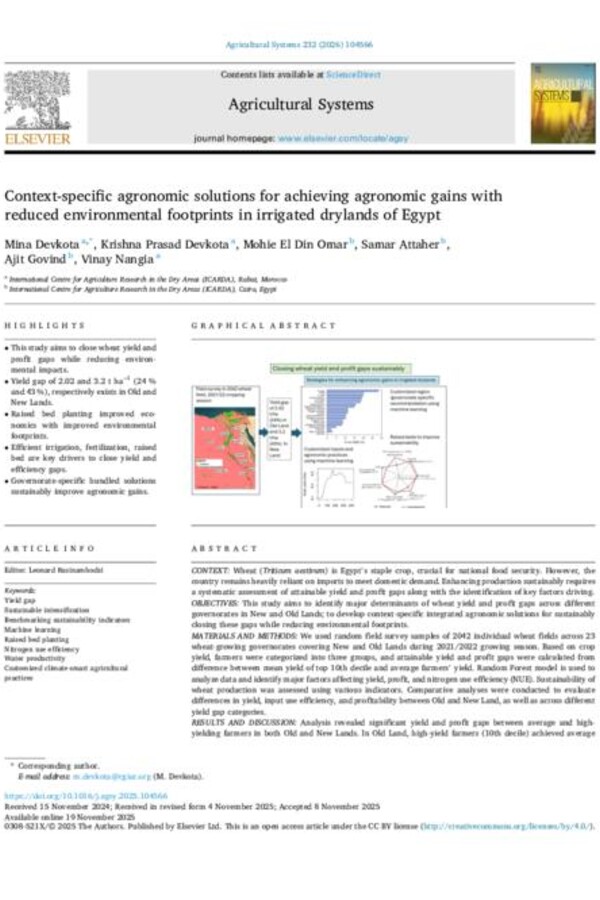
Context-specific agronomic solutions for achieving agronomic gains with reduced environmental footprints in irrigated drylands of Egypt
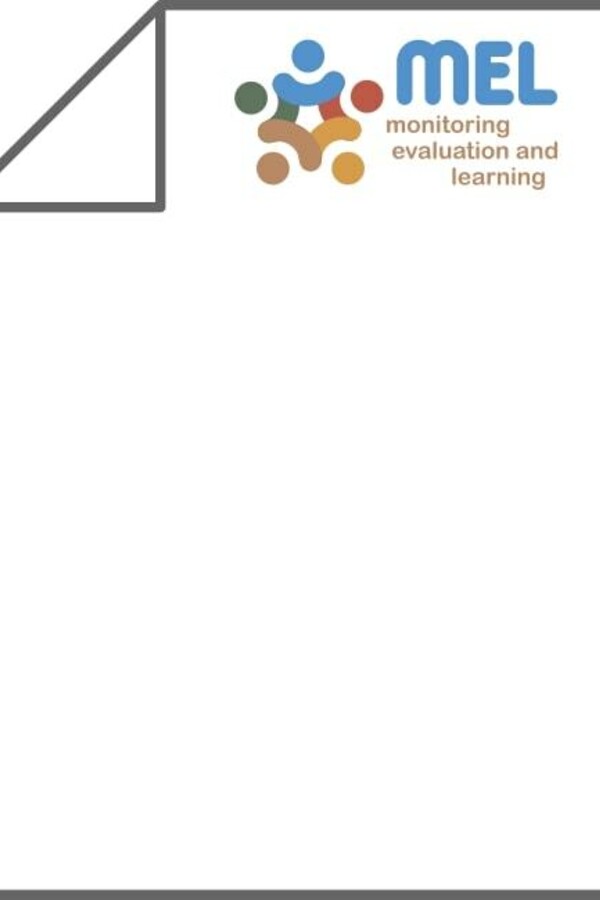
Root‐Derived Trans‐Zeatin‐Type Cytokinins Increase Cold Tolerance in Rice Seedlings by Regulating Energy Metabolism

Root-Derived Trans-Zeatin-Type Cytokinins Increase Cold Tolerance in Rice Seedlings by Regulating Energy Metabolism
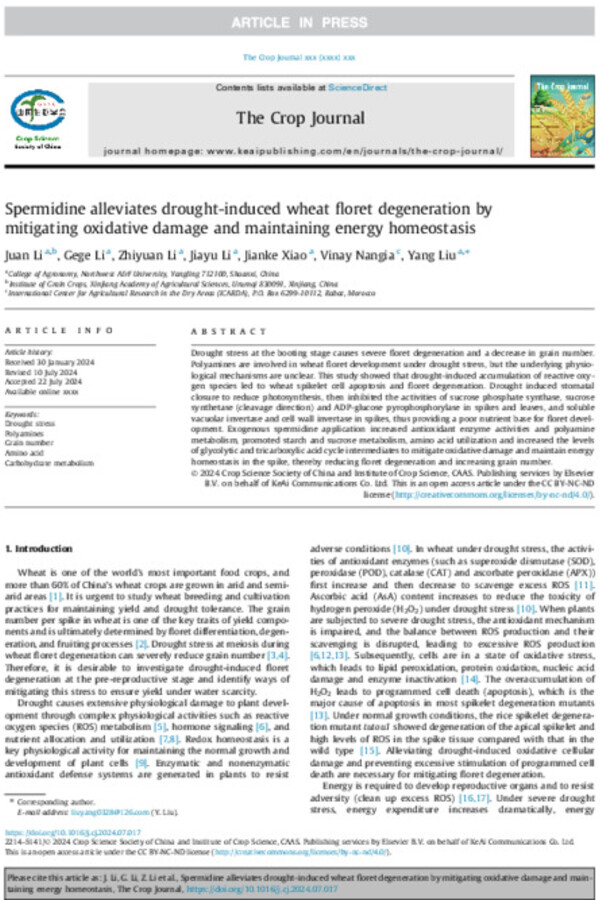
Spermidine alleviates drought-induced wheat floret degeneration by mitigating oxidative damage and maintaining energy homeostasis

Biochar induced trade-offs and synergies between ecosystem services and crop productivity

Investigation on water delivery performance and its quantification in large-scale Beni Amir irrigation scheme, Morocco
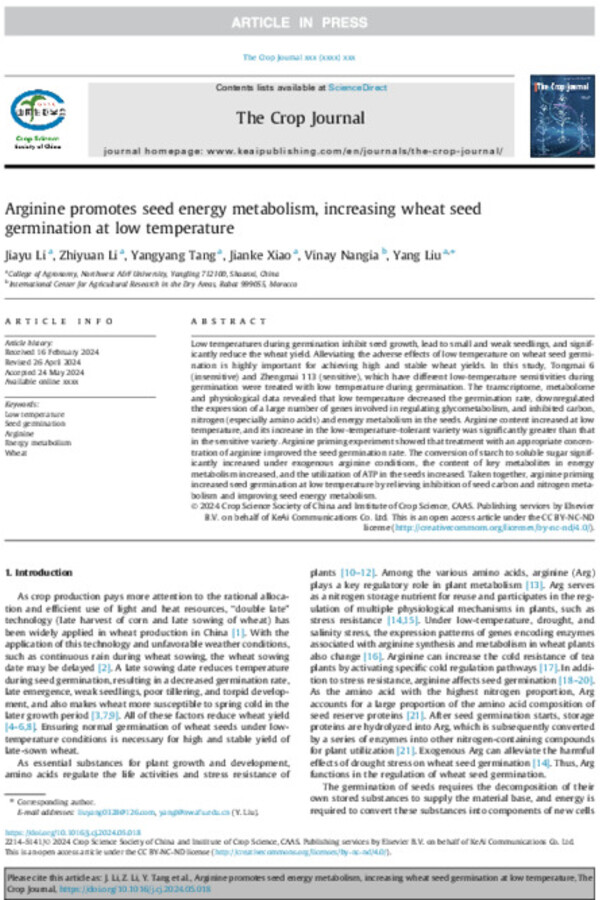
Arginine promotes seed energy metabolism, increasing wheat seed germination at low temperature
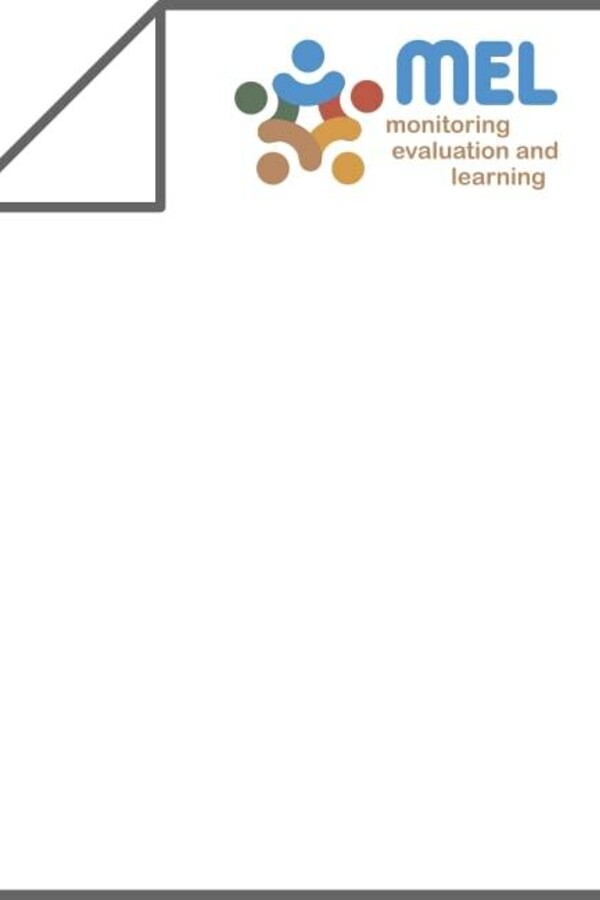
Spatio-temporal microbial regulation of aggregate-associated priming effects under contrasting tillage practices

Nutrient limitation of soil organic carbon stocks under straw return

Polyamines mediate the inhibitory effect of drought stress on nitrogen reallocation and utilization to regulate grain number in wheat
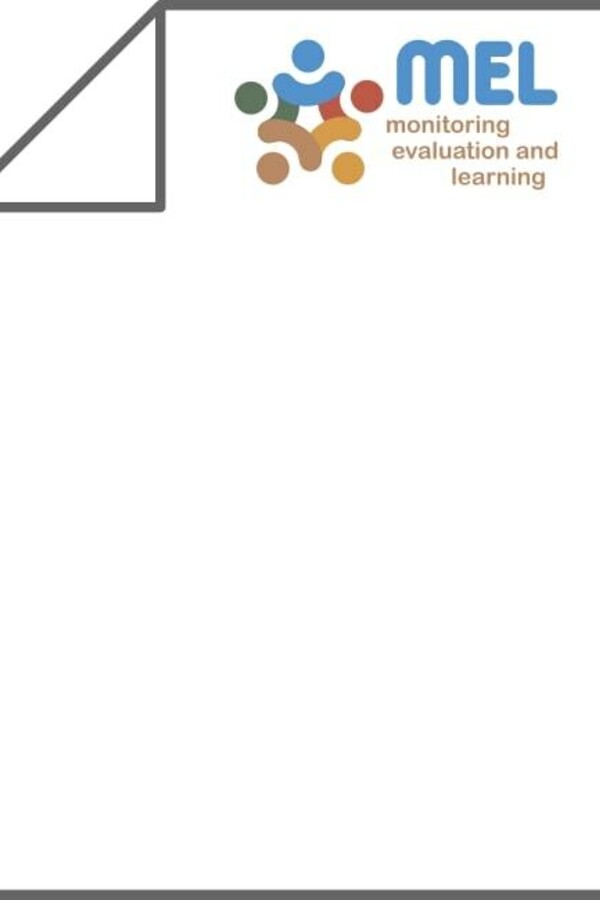
Critical hydrologic impacts from climate change: addressing an urgent global need

Integrating APSIM model with machine learning to predict wheat yield spatial distribution
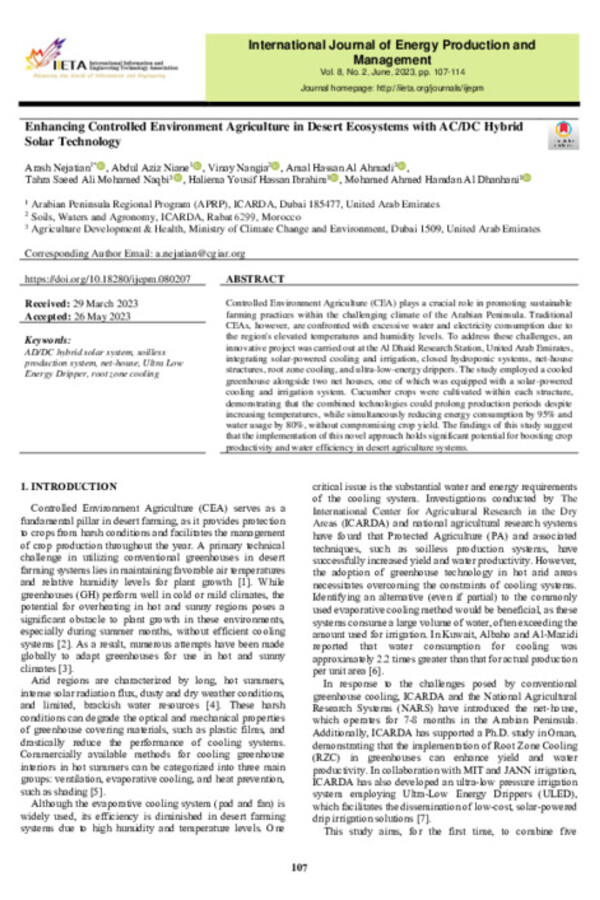
Enhancing Controlled Environment Agriculture in Desert Ecosystems with AC/DC Hybrid Solar Technology
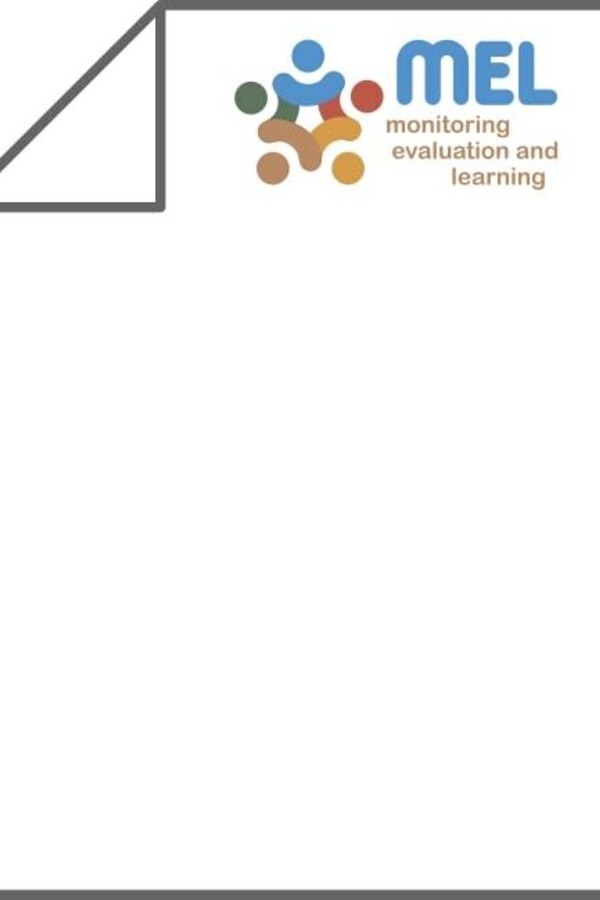
Microbial functional genes within soil aggregates drive organic carbon mineralization under contrasting tillage practices

Proximal thermal imaging-based irrigation scheduling for bread wheat in Egypt
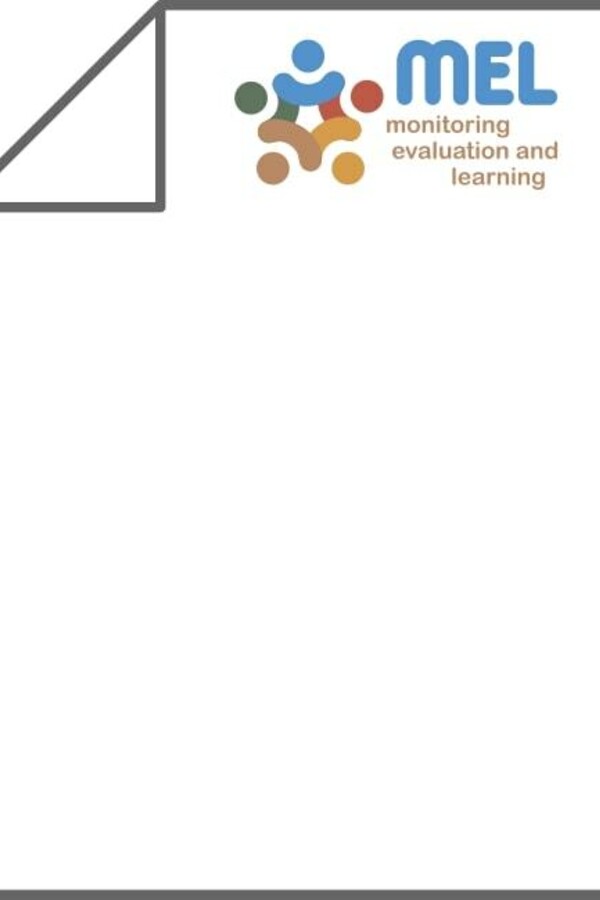
A synthesis of soil organic carbon mineralization in response to biochar amendment
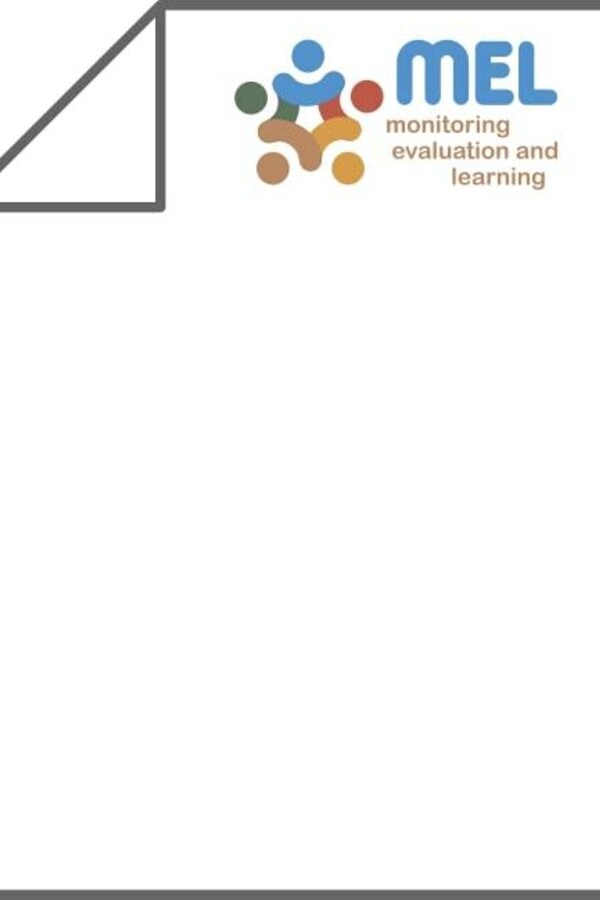
Performance of Cluster Bean (Cyamopsis tetragonoloba) under Varying Levels of Irrigation and Nitrogen
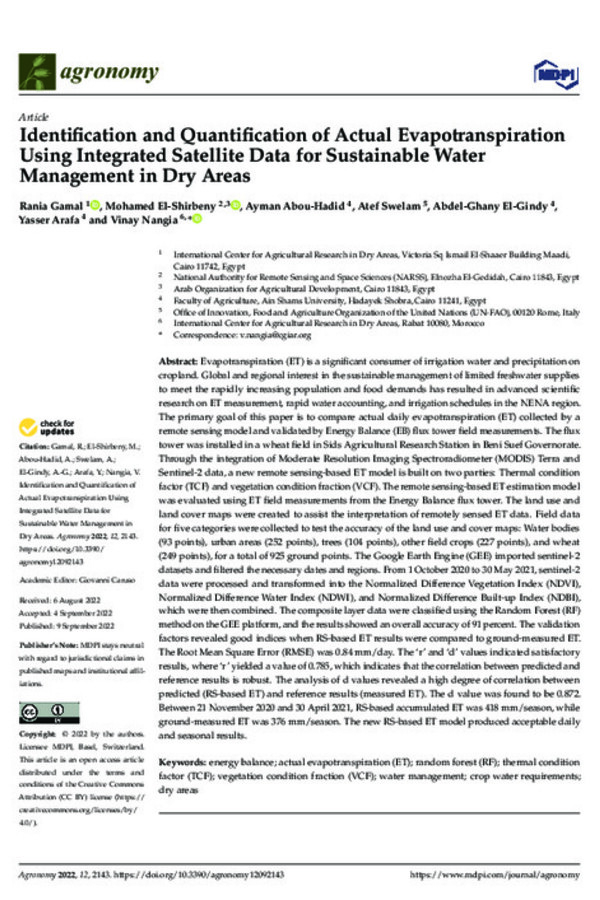
Identification and Quantification of Actual Evapotranspiration Using Integrated Satellite Data for Sustainable Water Management in Dry Areas
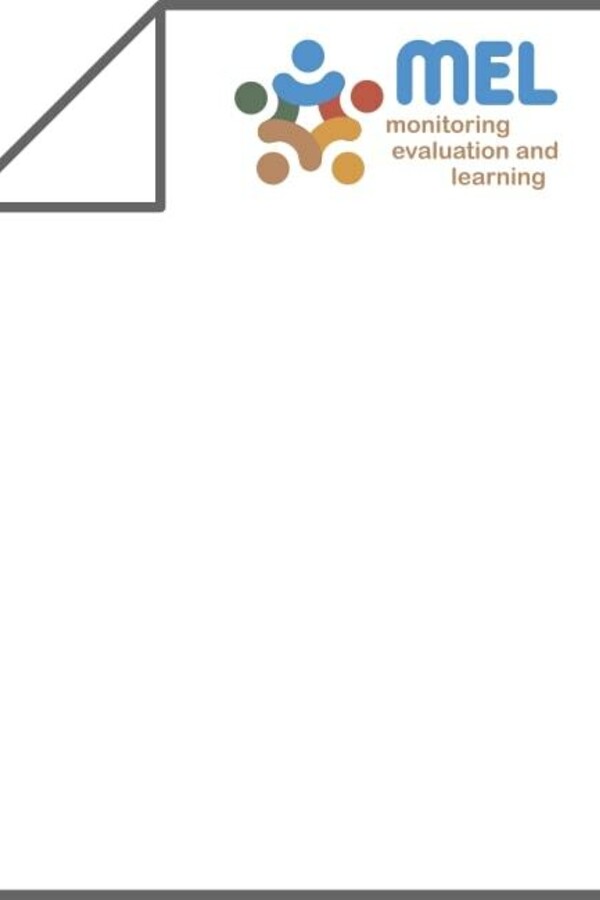
Global pattern of soil priming effect intensity and its environmental drivers
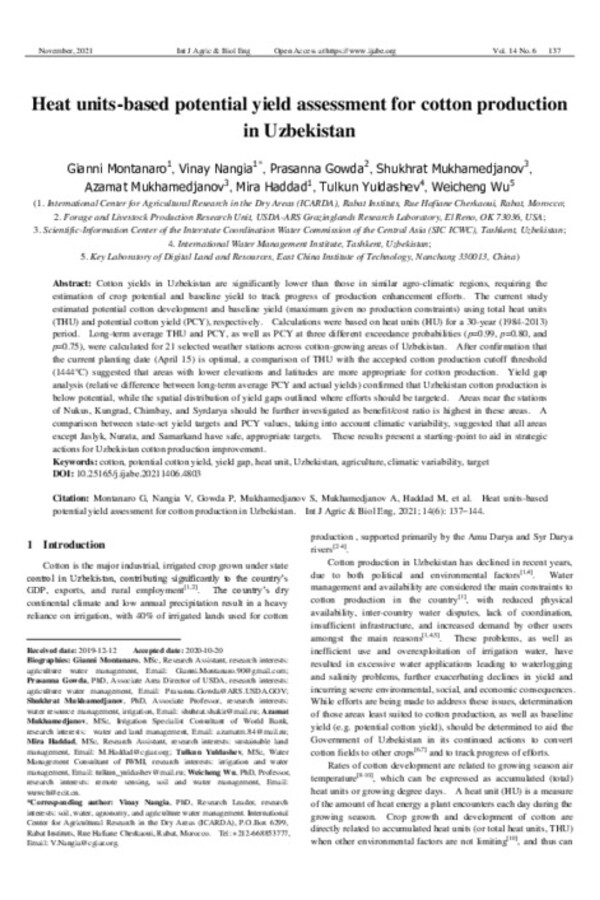
Heat units-based potential yield assessment for cotton production in Uzbekistan
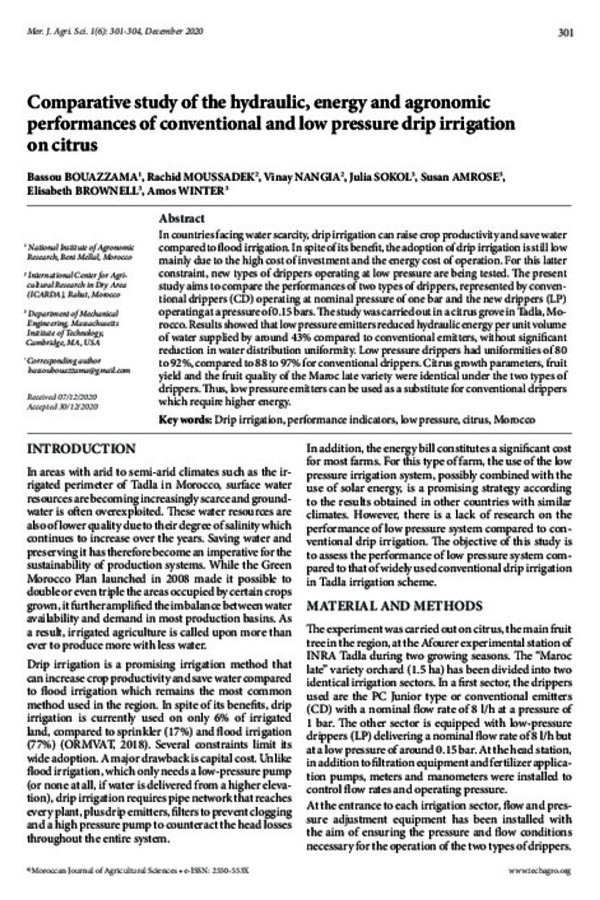
Comparative study of the hydraulic, energy and agronomic performances of conventional and low pressure drip irrigation on citrus
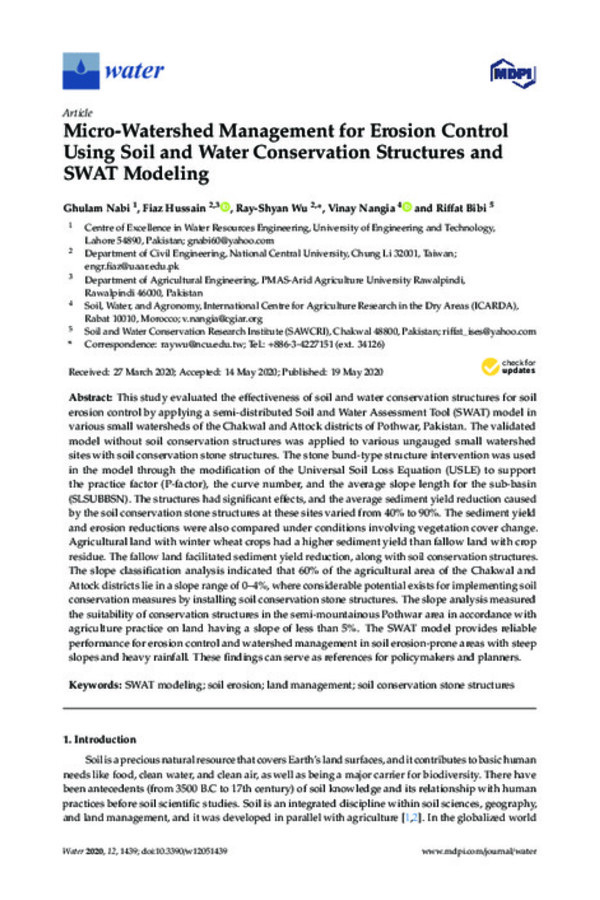
Micro-Watershed Management for Erosion Control Using Soil and Water Conservation Structures and SWAT Modeling

Effect of irrigation and nitrogen application on water productivity and performance of Cotton (Gossypium sp.)

Soil salinity prediction and mapping by machine learning regression in Central Mesopotamia, Iraq

SWAT: Agricultural water and nonpoint source pollution management at a watershed scale—Part II
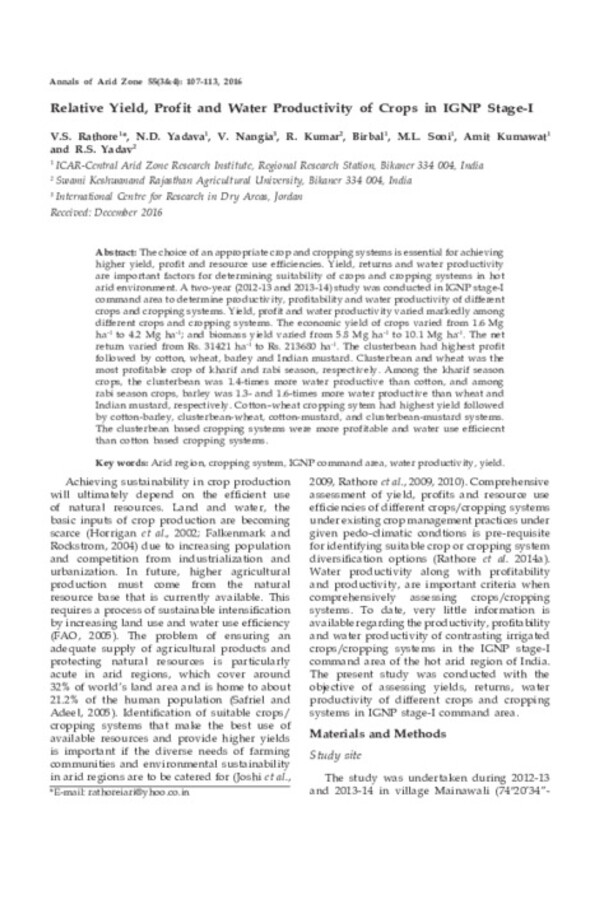
Relative Yield, Profit and Water Productivity of Crops in IGNP Stage-I

Improved On-farm Irrigation Management for Olive Growing - A Case Study from Morocco
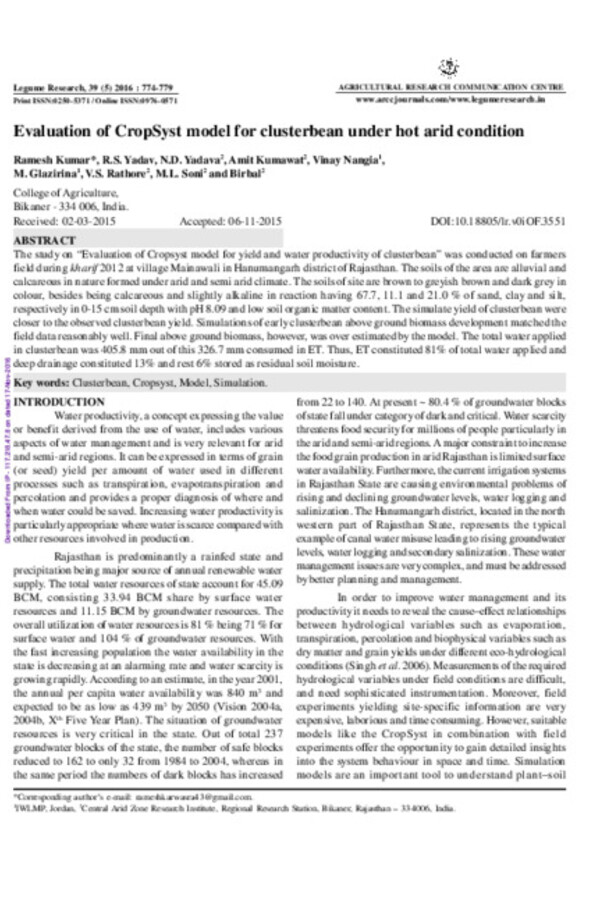
Evaluation of CropSyst model for clusterbean under hot arid condition
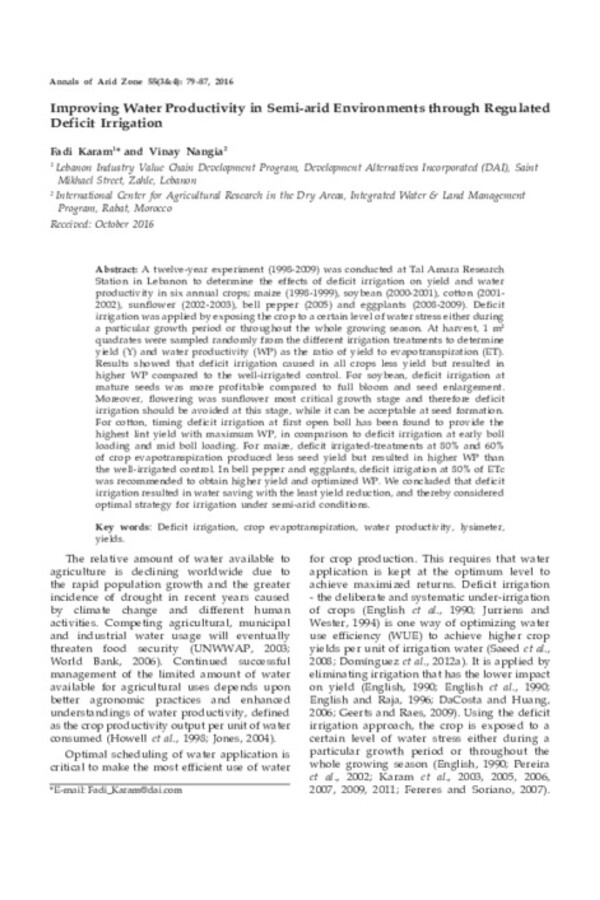
Improving Water Productivity in Semi-arid Environments through Regulated Deficit Irrigation
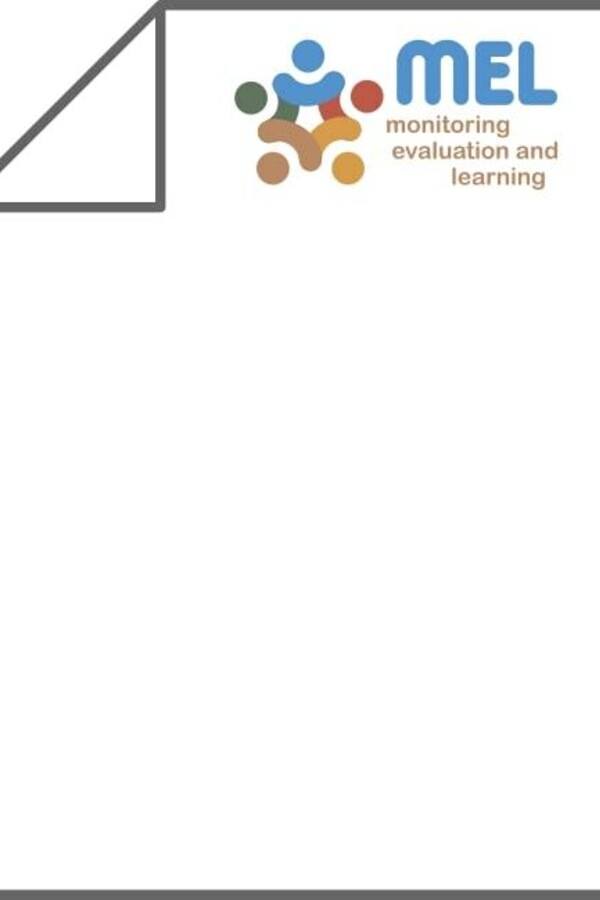
SWAT: Agricultural water and nonpoint source pollution management at a watershed scale

Supplemental Irrigation: A Promising Climate-resilience Practice for Sustainable Dryland Agriculture
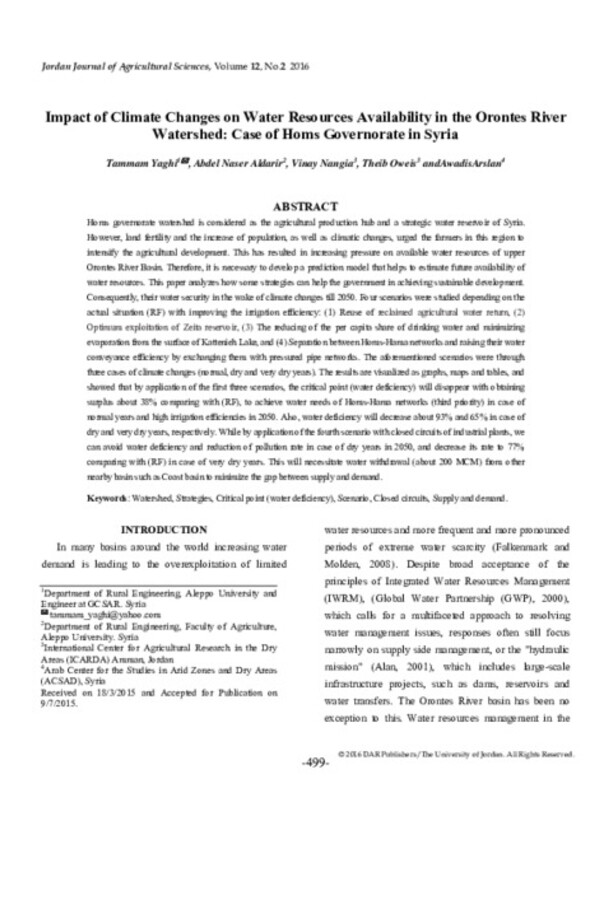
Impact of Climate Changes on Water Resources Availability in the Orontes River Watershed: Case of Homs Governorate in Syria
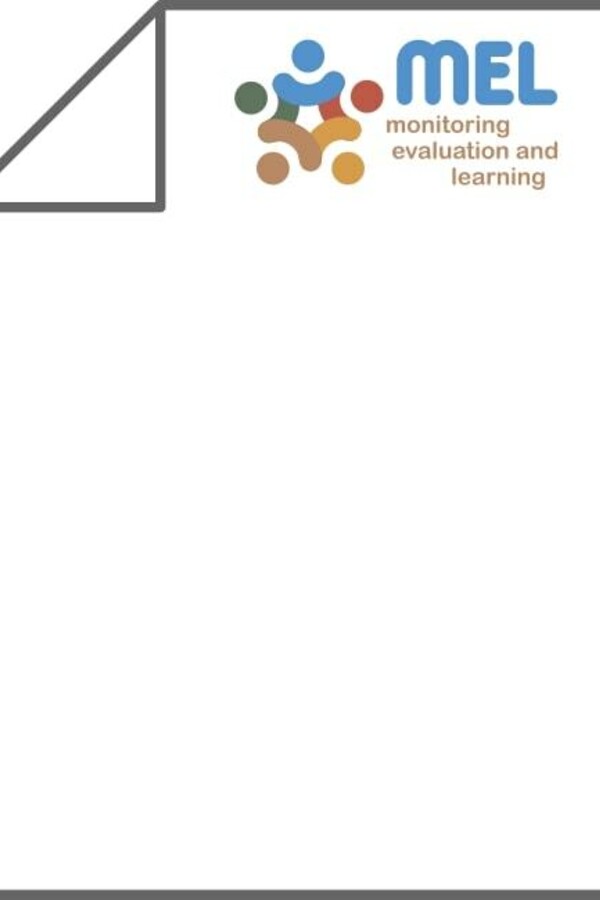
A user-friendly interactive tool for estimating reference ET using ASCE standardized Penman-Monteith equation
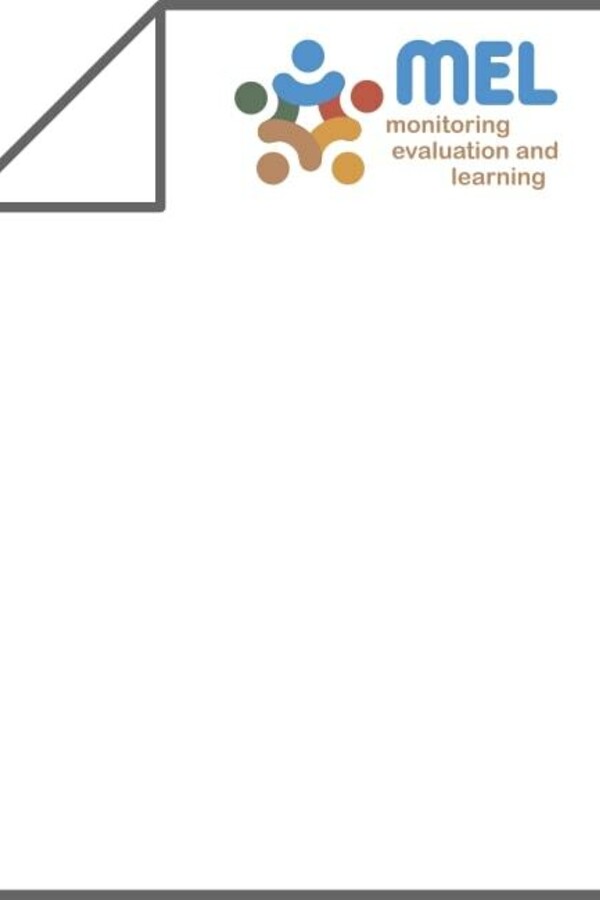
Mapping soil salinity changes using remote sensing in Central Iraq
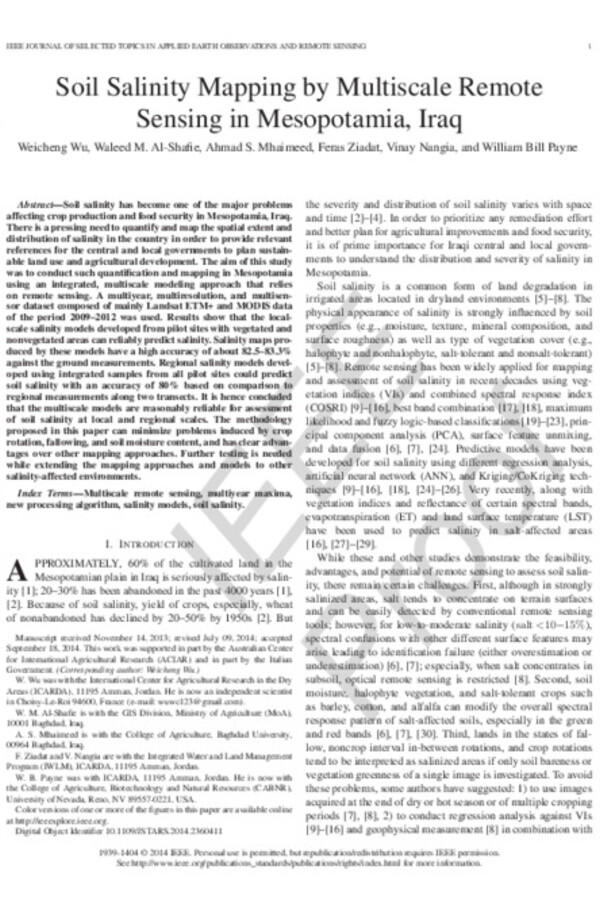
Soil Salinity Mapping by Multiscale Remote Sensing in Mesopotamia, Iraq
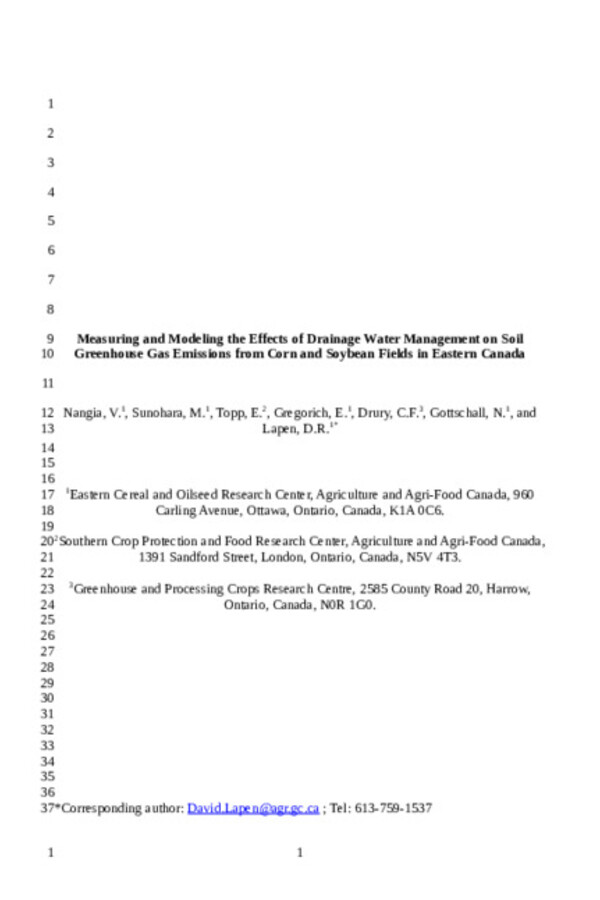
Measuring and modeling the effects of drainage water management on soil greenhouse gas fluxes from corn and soybean fields

Evaluation of deficit irrigation for efficient sheep production from permanent sown pastures in a dry continental climate
